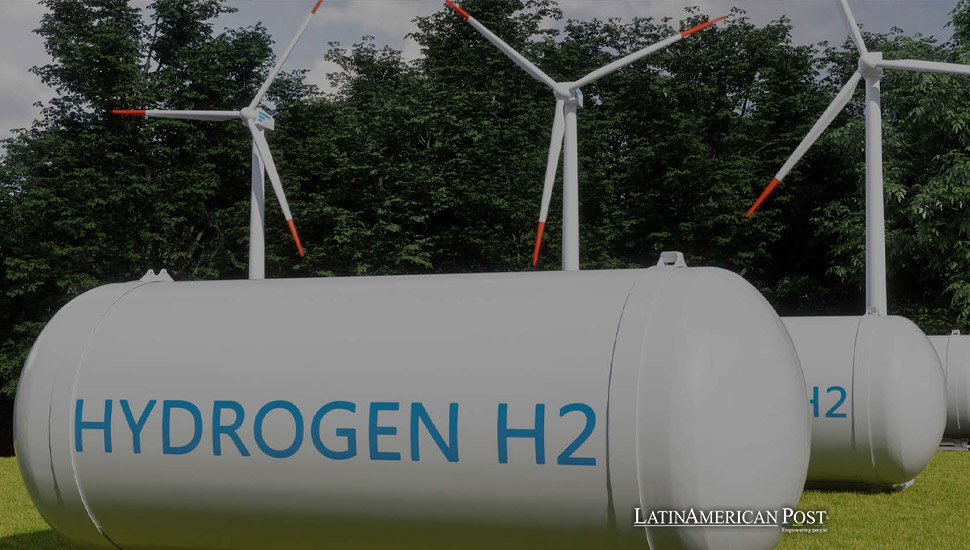Mexico’s Green Hydrogen Ambitions and Latin America’s Path to Decarbonization

As the world races towards decarbonization by 2050, Mexico and other Latin American countries are beginning to embrace clean hydrogen technologies. With international partnerships and a growing emphasis on green energy, the region is poised for transformation.
Latin America is becoming a significant player in the global push for decarbonization, with Mexico at the forefront. At a recent Clean Hydrogen Forum held in Mexico City, Japanese financial institutions such as the Japan Bank for International Cooperation (JBIC) invited Mexico to adopt hydrogen technologies to accelerate the country’s energy transition. Yuki Nakano, JBIC’s chief representative in Mexico, expressed optimism about Mexico’s future under President-elect Claudia Sheinbaum, who will assume office in October 2024. Her administration is expected to prioritize decarbonization as part of Mexico’s energy agenda for the 2024-2030 government plan.
“Her administration is looking to accelerate decarbonization, and we see potential in working together on projects that align with this vision,” Nakano said. He highlighted that JBIC already has 45 projects underway in Mexico, totaling $1.359 billion in loans, many of which are focused on sustainable energy initiatives such as green hydrogen.
Clean hydrogen, also known as green hydrogen, is produced using renewable energy sources, unlike traditional hydrogen production, which relies on fossil fuels. As a nascent industry in Mexico, clean hydrogen could become a major component of the country’s future energy mix. However, it faces significant challenges in areas such as regulation, technology, infrastructure, and a need for skilled labor.
Challenges and Opportunities in Clean Hydrogen Development
Despite the excitement surrounding the potential of clean hydrogen in Mexico, industry experts are cautious. During the forum, José Luis Sánchez, a representative from the consulting firm ERM, emphasized that the road ahead will not be easy. “As with any emerging industry, there are barriers to entry,” Sánchez explained. “There’s still much to be done to establish a regulatory framework, provide investment incentives, and advance technology for production, distribution, and storage.”
A pressing issue is a lack of a clear roadmap for hydrogen development in Mexico and the broader Latin American region. Governments and industries must collaborate to create the necessary regulatory frameworks that can drive investments and facilitate the growth of the hydrogen sector. “Training in new technologies will also be crucial,” Sánchez added, highlighting the need for skilled workers to manage and operate the complex infrastructure required for hydrogen production and distribution.
While the challenges are significant, the potential rewards are immense. The Mexican Hydrogen Association (AMH2) estimates that the green hydrogen sector could create up to three million jobs in Mexico alone. This is a crucial opportunity for a country where job creation is a top priority, especially in sustainable industries. As Mexico looks to scale up its hydrogen production capabilities, it could become a significant player in the global green hydrogen market, positioning itself as a hub for clean energy technologies.
A Regional Approach to Decarbonization
Mexico is not the only country in Latin America looking to green hydrogen as a solution for decarbonization. Across the region, several countries are exploring how this clean fuel can meet their energy needs while reducing carbon emissions.
Chile has been a leader in this space, with its ambitious plans to become the world’s leading producer of green hydrogen by 2030. With its abundant renewable energy resources, particularly solar and wind power, Chile has attracted significant investments from international companies. The country’s Atacama Desert, one of the sunniest places on Earth, is ideal for large-scale solar projects to generate the energy needed for hydrogen production.
Uruguay is also exploring green hydrogen opportunities. The country’s strong renewable energy sector, which already generates over 90% of its electricity from renewable sources, provides a solid foundation for developing hydrogen infrastructure. Uruguay’s government is working with private companies and international organizations to build a comprehensive hydrogen strategy, focusing on export potential.
Argentina, too, has expressed interest in developing its green hydrogen capabilities, particularly in the southern region of Patagonia, which has some of the world’s most favorable wind conditions. The Argentine government is partnering with global energy firms to explore hydrogen projects that could meet domestic energy needs and position the country as an exporter of green hydrogen to international markets.
These efforts are part of a broader movement across Latin America to transition away from fossil fuels and toward renewable energy. With the region’s vast natural resources, Latin America has the potential to become a global leader in green hydrogen production, contributing significantly to the worldwide goal of decarbonization by 2050.
The Global Green Hydrogen Movement
The push for green hydrogen is not limited to Latin America. Around the world, countries and companies are investing heavily in this clean energy source to meet climate targets. Several international success stories were presented as models for the region’s hydrogen future at the Clean Hydrogen Forum in Mexico.
One example is the Yuri Green Hydrogen Project in Australia, backed by the Japanese conglomerate Mitsui. The project in Western Australia aims to produce green hydrogen using renewable energy from solar and wind farms. The hydrogen will then be used for various industrial applications, including powering mining operations and reducing carbon emissions in heavy industries.
In the United States, Mitsubishi Power is responsible for several green hydrogen projects, including the Advanced Clean Energy Storage project in Utah, which will become one of the world’s most extensive hydrogen storage facilities. The project will use excess renewable energy to produce hydrogen, which can be stored and used when energy demand is high. Similar projects are underway in the United Kingdom and the Netherlands, where hydrogen is critical to Europe’s energy transition.
These international projects demonstrate the growing importance of green hydrogen in the global energy landscape. As countries work to reduce their carbon footprints, hydrogen offers a versatile and scalable solution for decarbonizing industries that are difficult to electrify, such as heavy manufacturing, transportation, and aviation.
Latin America’s Path to a Green Future
The development of green hydrogen in Latin America presents both challenges and opportunities. On the one hand, the region faces significant hurdles regarding regulatory frameworks, infrastructure, and investment. On the other hand, Latin America’s abundant renewable energy resources, particularly solar and wind power, make it an ideal location for large-scale hydrogen production.
For Mexico, the recent partnership with JBIC and the support from the Mexican Hydrogen Association are promising steps toward building a sustainable hydrogen industry. However, the road ahead will require continued collaboration between governments, private companies, and international partners. The transition to green hydrogen will not happen overnight, but with the right policies and investments, Latin America could become a global leader in this emerging industry.
Countries like Chile, Uruguay, and Argentina are already making significant progress, showing that the region has the potential to lead the way in green hydrogen production. As these projects move forward, they will help reduce carbon emissions, create jobs, and sustainably drive economic growth.
In the coming years, the success of green hydrogen in Latin America will depend on the region’s ability to overcome its challenges and seize the opportunities presented by this new energy frontier. With the global race to decarbonize heating up, Latin America is poised to play a crucial role in the world’s transition to a green future.
Also read: Didi Aims to Transform Mexico’s Electric Mobility Landscape
As the global shift toward green hydrogen accelerates, Latin America has a unique opportunity to lead this clean energy revolution. From Mexico to Chile, countries are embracing hydrogen technologies that could reshape their energy landscapes and contribute to a more sustainable future for the entire region.





